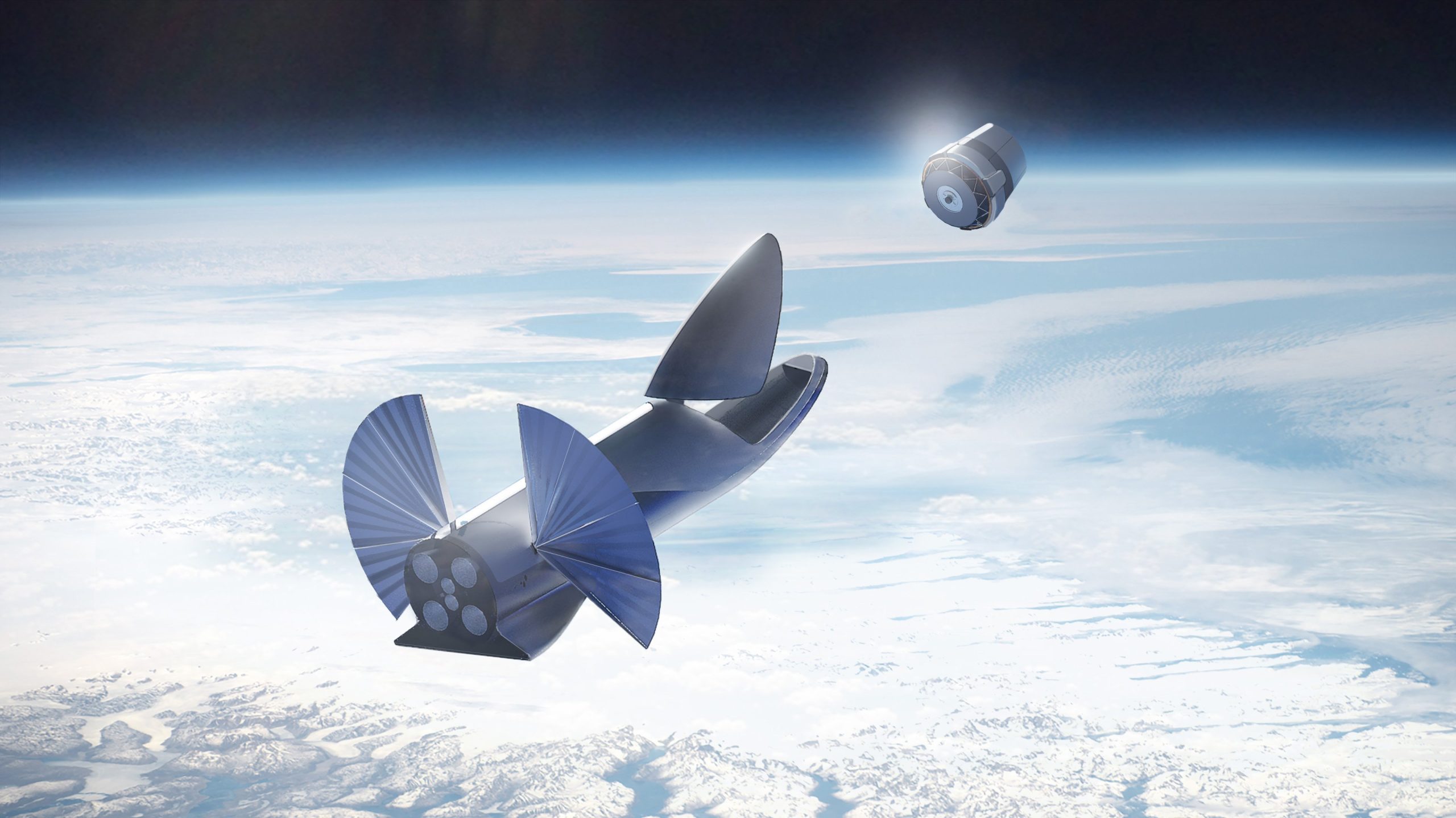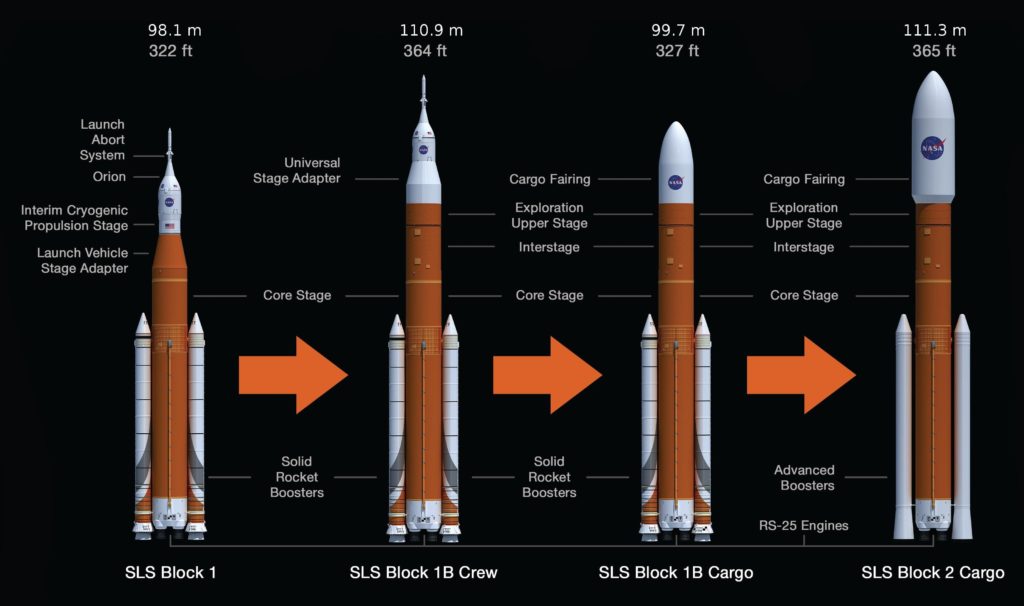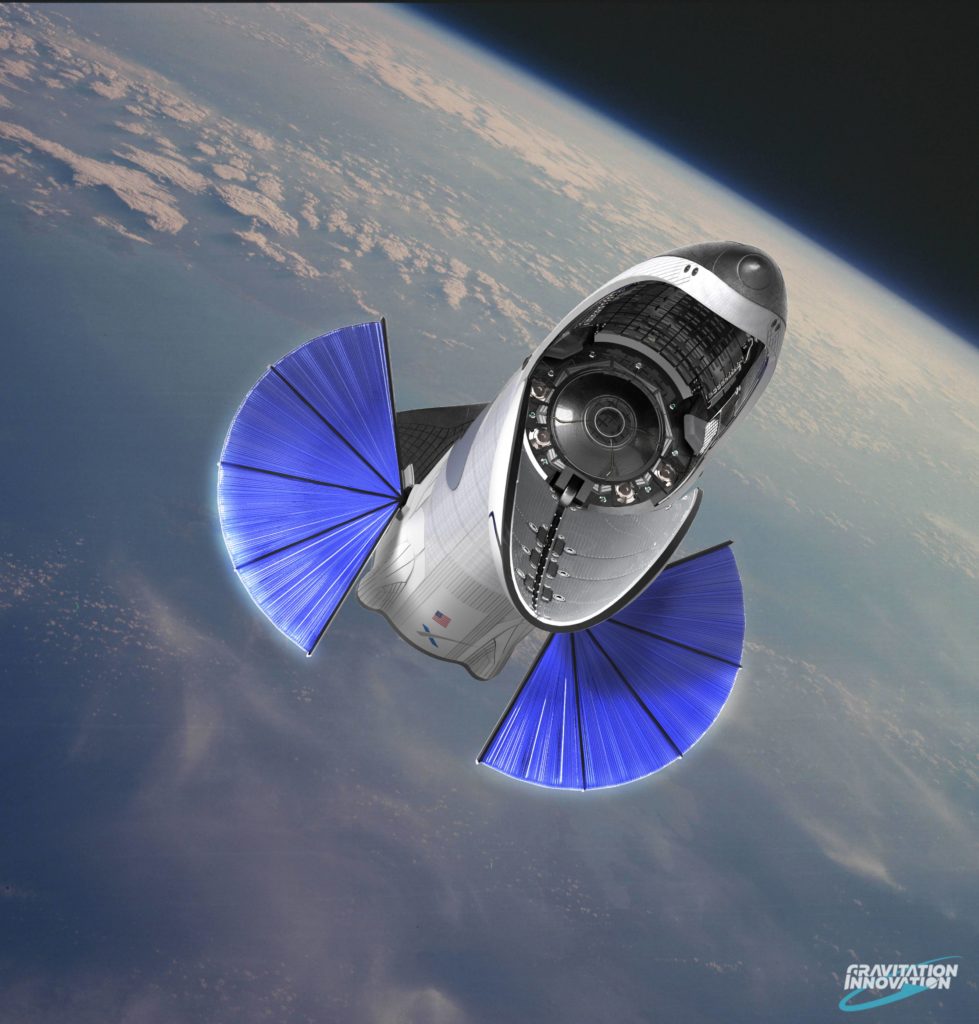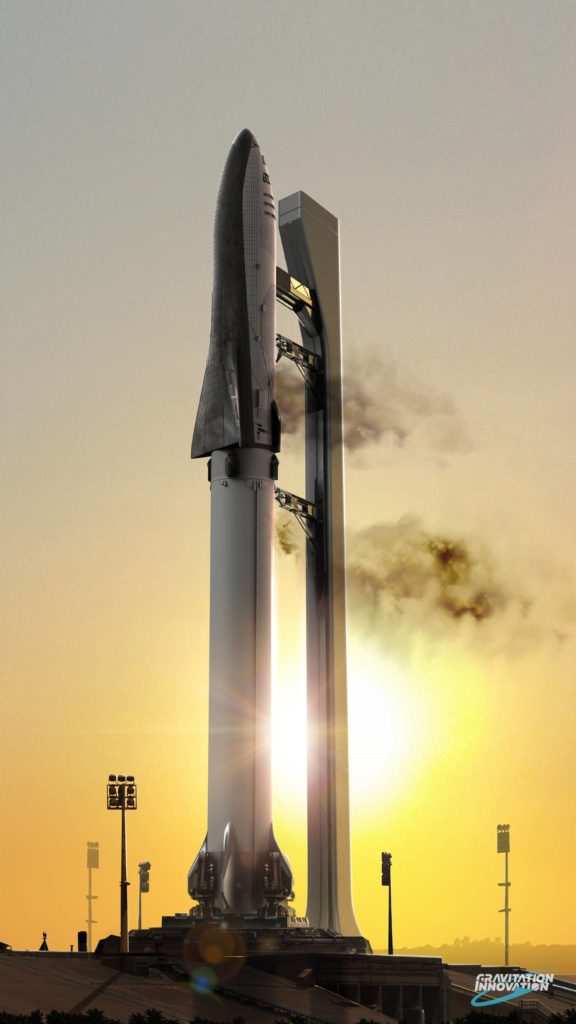

News
NASA funds study on SpaceX BFR as option for massive space telescope launch
Speaking at the Exoplanets II conference in Cambridge, UK July 6th, geophysicist and exoplanet hunter Dr. Debra Fischer briefly revealed that NASA had funded a study that would examine SpaceX’s next-gen BFR rocket as an option for launching LUVOIR, a massive space telescope expected to take the reigns of exoplanet research in the 2030s.
Conceptualized to follow in the footsteps of NASA’s current space telescope expertise and (hopefully) to learn from the many various mistakes made by their contractors, the LUVOIR (shorthand for Large UV/Optical/IR Surveyor) concept is currently grouped into two different categories, A and B. A is a full-scale, uncompromised telescope with an unfathomably vast 15-meter primary mirror and a sunshade with an area anywhere from 5000 to 20000 square meters (1-4 acres). B is a comparatively watered-down take on the broadband surveyor telescope, with a much smaller 8-meter primary mirror, likely accompanied by a similarly reduced sunshade (and price tag, presumably).
Debra Fischer: NASA is funding study on launching LUVOIR with SpaceX's BFR.
Primary option still SLS Block 2, but if it isn't ready there are private sector alternatives.#Exoplanets2
— Ryan MacDonald (@MartianColonist) July 6, 2018
Remember, this is a space telescope that would need to fit into the payload fairing of a rocket, survive the launch into orbit, and then journey nearly one million miles from Earth to its final operational destination, all before deploying a mirror and starshade as large or larger than Mr Steven’s SpaceX fairing recovery net. The James Webb Space Telescope (JWST), a rough successor to Hubble with a 6.5-meter primary mirror, is the only space telescope even remotely comparable to LUVOIR, and it has yet to launch after suffering a full decade of delays and almost inconceivable budget overruns. All we can do is hope that Northrop Grumman (primary contractor for JWST) is kept away from future giant space telescopes like LUVOIR.

LUVOIR A is pictured here with a 15-meter mirror and absolutely vast sunshade, roughly 80-100m long. (NASA)
The rocket problem
Nevertheless, the sheer scale of LUVOIR brings us back to an existential problem faced by all space telescopes – how to get into space in the first place. In this case, JWST offers a small taste of what launching such a large telescope requires, although it only truly applies the 8m LUVOIR B. The reason LUVOIR’s conceptual design was split into two sizes is specifically tied to the question of launch, with LUVOIR B’s 8m size cap dictated by the ~5 meter-diameter payload fairings prevalent and readily available in today’s launch industry.
https://twitter.com/Shamrocketeer/status/821799890942652417
LUVOIR A’s 15-meter mirror, however, would require an equally massive payload fairing. At least at the start, LUVOIR A was conceptualized with NASA’s Space Launch System (SLS) Block 2 as the launch vehicle, a similarly conceptual vehicle baselined with a truly massive 8.4 or 10-meter diameter payload fairing, much larger than anything flown to this day. However, the utterly unimpressive schedule performance of the SLS Block 1 development – let alone Block 1B or 2 – has undoubtedly sown more than a little doubt over the expectation of its availability for launching LUVOIR and other huge spacecraft. As a result, NASA has reportedly funded the exploration of alternative launch vehicles for the A version of LUVOIR – SpaceX’s Cargo BFR variant, in this case.
While only a maximum of 9 meters in diameter, the baselined cargo spaceship’s (BFS Cargo) payload bay has been estimated to have a usable volume of approximately 1500 cubic meters, comparing favorably to SLS’ 8.4 and 10-meter fairings with ~1000 to ~1700 cubic meters. The more traditional SLS fairing may offer more flexibility for minimizing complex deployment mechanisms for large telescopes (a sore spot for JWST), but SLS Block 2 is almost entirely up in the air at the moment, and liable to cost $5-10 billion alone to develop even after SLS Block 1 is flying (NET mid-2020). On the other hand, barring abject and total failure, SpaceX’s BFR rocket and spaceship could have many, many launches under its belt and a proven track record of reliability, whereas SLS Block 2 is unlikely to fly more than a handful of times ever, even if it gets built.
- NASA/Boeing’s SLS overview, showing the different Blocks planned. Currently Block 1’s first launch is NET mid-2020, while future variants are likely years away from launch. (NASA)
- The cargo version of the BFS (Big F- Spaceship) rendered by David Romax, including a number of educated guesses at what it might look like and how it might function. At the request of a friend, artist David Romax put together a truly jaw-dropping collection of concept art featuring SpaceX’s BFR rocket and its Cargo and Crew spaceships. (Gravitation Innovation/David Romax)
- BFR prepares for launch as the sun sets over the upgraded LC-39A, built off a concept of the future modifications included in SpaceX’s 2016 and 2017 video updates. At the request of a friend, artist David Romax put together a truly jaw-dropping collection of concept art featuring SpaceX’s BFR rocket and its Cargo and Crew spaceships. (Gravitation Innovation/David Romax)
With any luck, the results of the LUVOIR SpaceX BFR launch analysis will make their way into the public sphere once the study is completed, perhaps revealing a few tidbits about the capabilities of the next-generation composite rocket. Another astrophysicist familiar with the project also noted that Blue Origin was firmly in the running of similar conceptual launch studies, hinting at a potential competition for commercial launches of each company’s massive future rockets.
Follow us for live updates, peeks behind the scenes, and photos from Teslarati’s East and West Coast photographers.
Teslarati – Instagram – Twitter
Tom Cross – Twitter
Pauline Acalin – Twitter
Eric Ralph – Twitter

Elon Musk
Elon Musk’s X will start using a Tesla-like software update strategy
The initiative seems designed to accelerate updates to the social media platform, while maintaining maximum transparency.

Elon Musk’s social media platform X will adopt a Tesla-esque approach to software updates for its algorithm.
The initiative seems designed to accelerate updates to the social media platform, while maintaining maximum transparency.
X’s updates to its updates
As per Musk in a post on X, the social media company will be making a new algorithm to determine what organic and advertising posts are recommended to users. These updates would then be repeated every four weeks.
“We will make the new 𝕏 algorithm, including all code used to determine what organic and advertising posts are recommended to users, open source in 7 days. This will be repeated every 4 weeks, with comprehensive developer notes, to help you understand what changed,” Musk wrote in his post.
The initiative somewhat mirrors Tesla’s over-the-air update model, where vehicle software is regularly refined and pushed to users with detailed release notes. This should allow users to better understand the details of X’s every update and foster a healthy feedback loop for the social media platform.
xAI and X
X, formerly Twitter, has been acquired by Elon Musk’s artificial intelligence startup, xAI last year. Since then, xAI has seen a rapid rise in valuation. Following the company’s the company’s upsized $20 billion Series E funding round, estimates now suggest that xAI is worth tens about $230 to $235 billion. That’s several times larger than Tesla when Elon Musk received his controversial 2018 CEO Performance Award.
As per xAI, the Series E funding round attracted a diverse group of investors, including Valor Equity Partners, Stepstone Group, Fidelity Management & Research Company, Qatar Investment Authority, MGX, and Baron Capital Group, among others. Strategic partners NVIDIA and Cisco Investments also continued support for building the world’s largest GPU clusters.
News
Tesla FSD Supervised wins MotorTrend’s Best Driver Assistance Award
The decision marks a notable reversal for the publication from prior years, with judges citing major real-world improvements that pushed Tesla’s latest FSD software ahead of every competing ADAS system.

Tesla’s Full Self-Driving (Supervised) system has been named the best driver-assistance technology on the market, earning top honors at the 2026 MotorTrend Best Tech Awards.
The decision marks a notable reversal for the publication from prior years, with judges citing major real-world improvements that pushed Tesla’s latest FSD software ahead of every competing ADAS system. And it wasn’t even close.
MotorTrend reverses course
MotorTrend awarded Tesla FSD (Supervised) its 2026 Best Tech Driver Assistance title after extensive testing of the latest v14 software. The publication acknowledged that it had previously criticized earlier versions of FSD for erratic behavior and near-miss incidents, ultimately favoring rivals such as GM’s Super Cruise in earlier evaluations.
According to MotorTrend, the newest iteration of FSD resolved many of those shortcomings. Testers said v14 showed far smoother behavior in complex urban scenarios, including unprotected left turns, traffic circles, emergency vehicles, and dense city streets. While the system still requires constant driver supervision, judges concluded that no other advanced driver-assistance system currently matches its breadth of capability.
Unlike rival systems that rely on combinations of cameras, radar, lidar, and mapped highways, Tesla’s FSD operates using a camera-only approach and is capable of driving on city streets, rural roads, and freeways. MotorTrend stated that pure utility, the ability to handle nearly all road types, ultimately separated FSD from competitors like Ford BlueCruise, GM Super Cruise, and BMW’s Highway Assistant.
High cost and high capability
MotorTrend also addressed FSD’s pricing, which remains significantly higher than rival systems. Tesla currently charges $8,000 for a one-time purchase or $99 per month for a subscription, compared with far lower upfront and subscription costs from other automakers. The publication noted that the premium is justified given FSD’s unmatched scope and continuous software evolution.
Safety remained a central focus of the evaluation. While testers reported collision-free operation over thousands of miles, they noted ongoing concerns around FSD’s configurable driving modes, including options that allow aggressive driving and speeds beyond posted limits. MotorTrend emphasized that, like all Level 2 systems, FSD still depends on a fully attentive human driver at all times.
Despite those caveats, the publication concluded that Tesla’s rapid software progress fundamentally reshaped the competitive landscape. For drivers seeking the most capable hands-on driver-assistance system available today, MotorTrend concluded Tesla FSD (Supervised) now stands alone at the top.
News
Elon Musk’s Grokipedia surges to 5.6M articles, almost 79% of English Wikipedia
The explosive growth marks a major milestone for the AI-powered online encyclopedia, which was launched by Elon Musk’s xAI just months ago.

Elon Musk’s Grokipedia has grown to an impressive 5,615,201 articles as of today, closing in on 79% of the English Wikipedia’s current total of 7,119,376 articles.
The explosive growth marks a major milestone for the AI-powered online encyclopedia, which was launched by Elon Musk’s xAI just months ago. Needless to say, it would only be a matter of time before Grokipedia exceeds English Wikipedia in sheer volume.
Grokipedia’s rapid growth
xAI’s vision for Grokipedia emphasizes neutrality, while Grok’s reasoning capabilities allow for fast drafting and fact-checking. When Elon Musk announced the initiative in late September 2025, he noted that Grokipedia would be an improvement to Wikipedia because it would be designed to avoid bias.
At the time, Musk noted that Grokipedia “is a necessary step towards the xAI goal of understanding the Universe.”
Grokipedia was launched in late October, and while xAI was careful to list it only as Version 0.1 at the time, the online encyclopedia immediately earned praise. Wikipedia co-founder Larry Sanger highlighted the project’s innovative approach, noting how it leverages AI to fill knowledge gaps and enable rapid updates. Netizens also observed how Grokipedia tends to present articles in a more objective manner compared to Wikipedia, which is edited by humans.
Elon Musk’s ambitious plans
With 5,615,201 total articles, Grokipedia has now grown to almost 79% of English Wikipedia’s article base. This is incredibly quick, though Grokipedia remains text-only for now. xAI, for its part, has now updated the online encyclopedia’s iteration to v0.2.
Elon Musk has shared bold ideas for Grokipedia, including sending a record of the entire knowledge base to space as part of xAI’s mission to preserve and expand human understanding. At some point, Musk stated that Grokipedia will be renamed to Encyclopedia Galactica, and it will be sent to the cosmos.
“When Grokipedia is good enough (long way to go), we will change the name to Encyclopedia Galactica. It will be an open source distillation of all knowledge, including audio, images and video. Join xAI to help build the sci-fi version of the Library of Alexandria!” Musk wrote, adding in a later post that “Copies will be etched in stone and sent to the Moon, Mars and beyond. This time, it will not be lost.”











